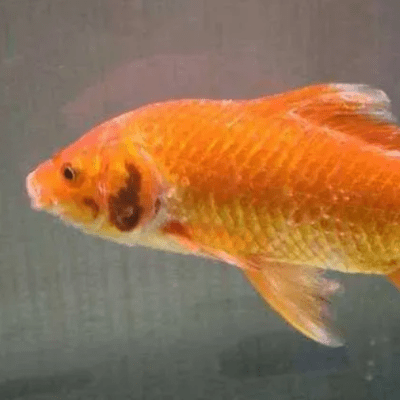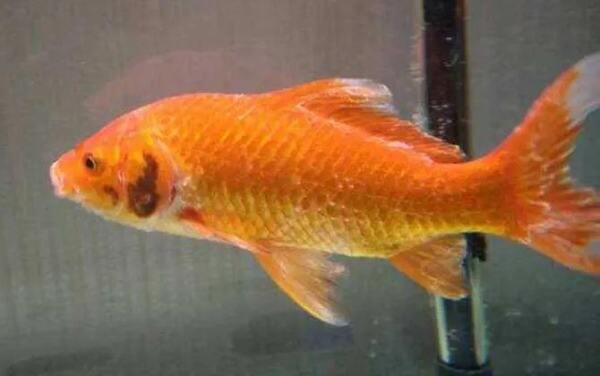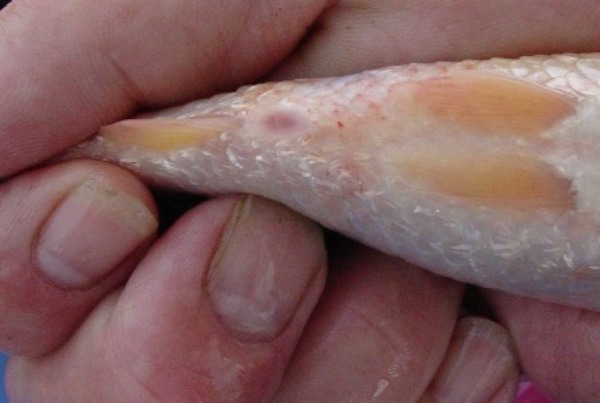کوی قیش آییندا خصوصی ساغلیق پروبلئملری ایله اوز-اوزه گلیر، خصوصیله سویون سویون درجه سی نین دوشمه سی و سویون کیفیتینین یئرسیز ایداره سی سبب سیله، اونلارین موختلیف خسته لیکلره معروض قالدیرماسی سبب اولور. بو اورتاق مسئله لری آنلاماق و اونا مانع اولماق...

کوی قیش آییندا خصوصی ساغلیق پروبلئملری ایله اوز-اوزه گلیر، خصوصیله سویون سویون درجه سی نین دوشمه سی و سویون کیفیتینین یئرسیز ایداره سی سبب سیله، اونلارین موختلیف خسته لیکلره معروض قالدیرماسی سبب اولور. بو اورتاق مسئله لری آنلاماق و اونا مانع اولماق، کوی اوچون تهلوکه سیز بیر قیشین تامین ائدیلمه سی اوچون حیاتی دیر. آشاغیدا قیشدا یایلان بعضی خسته لیک لر و اونلاردان ایمتینا ائتمک اوچون یوللار بیلدیریلیر:
پارازیت لردن گلن عفونت لر
آغ لکه لری (Ich) پوستدا کیچیک آغ لکه لرین یارادیجیلیغیندا، پارازیت پروتوزولارین سبب سیز نفس آلما و اشتها سیزلییه سبب اولور. 
مخنث: آبین لاپ یاخشی کیفیتینی ساخلاماق، آب پارامترلرینی منظم بیر شکلینده معاینه ائتمک و چوخلو جمعیتدن اوزاقلاشماق. 
مخنث: سو نین عالی کیفیتینی ساخلاماق، سو یئرینی گئنیش دَییشمه یه چالیشماق، معادل تغذیه و بالیق ایمونیتینی گوجلندیرمک
باکتریال خسته لیک لر
پوست قرص: یارالارین آلایلان سویا یا دا یخما شرایطینه معروض قالدیغی زامان باش وئریر، باکتریلرین ایشغال ائتمه سینه و دَرئده قرچ یاراتماسینا ایمکان وئریر.
مخنث: Fiziki zədələrin qarşısını almaq, müntəzəm həyata keçirmək Dezinfeksiya və kiçik halları antibiotik hamamları ilə müalicə etmək.
باليقلارين چوروموشو: عادي اولاراق سوين قوايلتي نين ضعيف اولماسي و يا تيمپراتورون اوچاق دَييشمه سي نين نتيجه سينده، باليق توخوملاري نيكروزا سبب اولور. 
مخنث: سویون تئمپراتورونو و pH دَیَرینی دایم ساخلاماق، یئرلی یئرلری منظم بیر شکیلده کَسمک و ناخوش بالیقلاری قرنطینه ائتمک.
قارچینانینانفیکشن
ساپرولژنیا: آغ، پنبه کیمی بیر توک کیمی گؤرونور، عمومی اولاراق یارالی یا ایممونومومومومومیتلی بالیقلاردا تاپیلیر. 
مخنث: گونلوی سویون کیفیتینین مدیریتینی یاخشیلاشدیریر، سویو تمیز ساخلار، بالیقلارین مقاومتینی گوجلندیرر.
سوء تغذیه
ضعيفليک سندرومي: اوزون مودتدن سونرا کی سویوقلار و یئمکلرین آزالماسی، یالنیز دا یئمکلرین ضعیفله مه سی بالیقلاری ضعیفله دیر.
مخنث: غذالارلا دولودور و ساغلام بؤیومو دستک ائتمک اوچون یئرینه یئرلشدیریر.
استرس دن قورتولماق
هیپوکسی: آز اکسیژن لی لی لیک و قیشدا سو نین ضعیف کیفیتی، کویلرین ساغلیغینا تأثیر ائدن، آرتمیش بیر استرس حالینا سبب اولا بیلر.
مخنث: سويو مناسب درجه ده ساخلايين، دوزگون اوکسیجن آلینماسینی تامین ائدین و لازیم اولمایان زحمتلری آزالدین.
مخفي تدبيرلرين خلاصه سي
1. ايستيقبال آبین کیفیتینین نظارتی: آمونیاک، نایتریت و نیتراتین دوزونو دوروملا چکیرسن کی، اونلارین یئرینه یئرلشمه سین.
2. ایندیکی زاماندا عایق گیری تدبیرلری: آبین تئمپراتورونون ثابیتلیگینی تامین ائتمک، چوخ سویوق شرایط و یا تئمپراتورون بؤیوک فرقلی اولماسیندان اوزاقلاشماق.
3. ایندیکی زاماندا. مناسب یئمک: کولتورون درجه سینه گؤره یئمک کیمی مقدارلارینی دوزله یین و ویتامین و مینرال لارا وارلی بیر رژیم وئرین.
4. ایندیکی زاماندا بهداشتي ساخلاماق: بو حوووضون تمیزلیینی، قالینتیلارینی آرادان آپارماسی و سوونو تازه ساخلاماسی گرک.
5- تورکجه بيماري نين ايلک کشفي: باقاعده بالیق بازرسی آپارین، هر هانسی بیر ناروا وضعیته تئز یئتیشین و گومان اولونان حاللاری تکجه یئرینه قویون.
دقتلی ایداره و مخنیفات استراتژیلرینی تطبیق ائتمکله، قیشدا کی کوی خسته لیکلری نین خطرینی اهمیت لی درجه ده آزالتماق و بوتون سویوق فصلده اونلارین ساغلیغینی تامین ائتمک اولار. بو گؤزل مخلوقلارا لاپ ياخشي باخماق اوچون هر قدم صبئر و وقف طلب ائدیر.